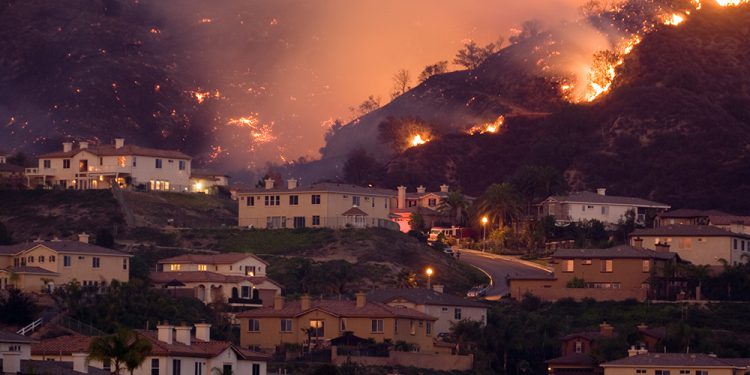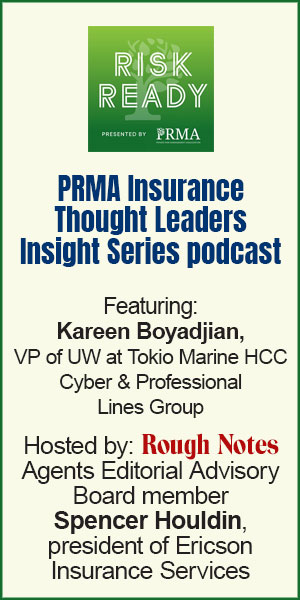The effect of rulings that came down just as Los Angeles
area residents were recovering from the devastating 2025 wildfires
A California trial court ruled for the insurance company, reasoning
that the wildfire residue that had been literally wiped away by the homeowners
did not amount to “physical loss” under the homeowners policy. That ruling was upheld on appeal … .
By Joseph S. Harrington, CPCU
If you read Coverage Concerns postings regularly (surely you do) you might be inclined to accuse this author of being lazy, unimaginative, or both. After all, he posted about wildfire smoke damage in September 2024, and about the effect of rulings related to COVID-19 a month later.
As luck (for the author) has it, this Coverage Concerns addresses the effect of COVID-19 on smoke damage claims. What gives? Two important rulings on wildfire claims in California courts.
While the claims arose from losses incurred in earlier years, the rulings came down just as Los Angeles area residents were recovering from the devastating 2025 wildfires. It’s a topic well worth revisiting, and this may not be the last of it.
Presence is not damage
One case, decided in February 2025, involved a residential property claim by homeowners whose dwelling was permeated by smoke, soot, and ash, but suffered no further physical damage, during the October 2019 Saddleridge Fire in the San Fernando Valley.[1]
A cleaning expert hired by the insurer estimated that the home could be cleaned for $4,300, compensable under the policy. A building hygienist hired by the insureds determined that the home could be cleaned for even less effort and expense.
The insured homeowners chose to clean the house themselves, but later sought to have the insurer pay for further professional cleaning. The insurer contested the claim but paid the owners $20,000 to settle the matter. The policyholders sued for more.
A California trial court ruled for the insurance company, reasoning that the wildfire residue that had been literally wiped away by the homeowners did not amount to “physical loss” under the homeowners policy. That ruling was upheld on appeal, with the appellate court noting that the effects of the wildfire on the home did not “alter the property itself in a lasting and persistent manner.”
In making its ruling, the appellate court relied in part on a 2024 ruling by the California Supreme Court that the mere presence of the COVID-19 coronavirus did not constitute physical damage. In making its ruling, California’s top court stated that “the physical alteration need not be visible to the naked eye, nor must it be structural, but it must result in some injury to or impairment of the property as property.” [2]
Since the homeowners had been living in their dwelling since their initial cleaning, the court reasoned that it had not been impaired.
Income loss
That supreme court determination came in a case regarding business income coverage, the subject of another recent smoke damage ruling, this one handed down by a federal district court in January 2025.
In a case arising from October 2017 wildfires in northern California, a restaurant received more than $100,000 from its insurer for income lost during a 10-day period when it was forced to suspend operations due to an order by civil authorities.[3] However, the insured claimed it was forced to remain closed after the civil order was lifted in order to remediate contamination of the insured location by smoke and debris from the wildfire.
At this point, a question might have arisen about the trigger for income coverage. Basic business income coverage is typically triggered by (1) damage at an insured location (2) by a covered peril that (3) causes a necessary suspension of operations. “Civil authority” coverage is an extension of income coverage triggered when a civil authority denies access to a business because of damage to any property by a covered peril.
In this restaurant case, the civil authority coverage was not at issue; something burned, authorities shut down businesses in the wake of it, and the insurer paid for resulting lost income. After the order expired, however, the question became whether the continued suspension of operations was due to damage by a covered peril.
Smoke is a covered peril under nearly all open- or named-perils policy forms. Also, the insurer in this case conceded that, under California case law, “contamination of a structure that seriously impairs or destroys its function may qualify as direct physical loss.”
Furthermore, the judge determined that COVID-19 rulings which had barred income coverage did not apply in this case as the presence of a virus did not require the extensive “rehabilitation or restoration efforts” needed to remove other types of contaminants.
As a result, the restaurant was allowed to claim there was damage from wildfire smoke, but it wasn’t a complete victory. Before it could recover for lost income, the restaurant was told to address certain issues of fact. In particular, it still had to convince the court that the continued suspension of operations was due to smoke damage (a covered peril), and not from other circumstances not covered under the policy.
As claims pour in from the 2025 Los Angeles wildfires, we can expect—and hope for—clarity from the courts about what constitutes smoke damage and how it impacts physical damage and income coverage.
[1] Gharibian v. Wawanesa Gen. Ins. Co., Case No. B3258592 (Cal. App. Feb. 7, 2025)
[2] Another Planet Ent., LLC v. Vigilant Ins. Co. , 548 P.3d 303 (Cal. 2024)
[3] Bottega LLC v. National Surety Corp., No. 21-cv-03614, 2025 U.S. Dist. LEXIS 5666 (N.D. Cal. Jan. 10, 2025)
The author
Joseph S. Harrington, CPCU, is an independent business writer specializing in property and casualty insurance coverages and operations. For 21 years, Joe was the communications director for the American Association of Insurance Services (AAIS), a P&C advisory organization. Prior to that, Joe worked in journalism and as a reporter and editor in financial services.






